Written by Larissa Estes, Program Manager, Prevention Institute.
Disclaimer: Moving Health Care Upstream is a collaborative effort co-led by Nemours Children’s Health System (Nemours) and the Center for Healthier Children, Families & Communities at the University of California- Los Angeles (UCLA). The views and opinions expressed in this article are those of the author(s) and do not necessarily reflect the official policy or position of Nemours, UCLA or the Moving Health Care Upstream initiative.
Over the last two decades, health leaders have increasingly come to recognize that the places we live, work, learn, play, and pray affect our physical health, such as our risk for diabetes or heart disease, or our ability to recover from illness. They have been less engaged, however, in applying this community prevention knowledge to influence mental health outcomes.
By improving community conditions, and pairing this with high-quality mental health services, our society can reduce the likelihood, frequency, and intensity of mental illness and mental health challenges—and physical health outcomes as well.
In a paper released in fall 2017, Prevention Institute (PI) explains the intersection of health and mental health and presents an upstream approach that addresses the community conditions that have a tremendous influence on the development of mental illness and mental health challenges. The new paper, Back to Our Roots, was informed by PI’s work with community initiatives nationwide like Making Connections for Mental Health and Wellbeing Among Men and Boys. In PI’s opinion, we won’t be able to reach the scale we need to successfully address mental challenges such as diseases of despair and the opioid crisis facing our country without including primary prevention as a key strategy.
Mental illness and experiences that harm mental health and wellbeing can adversely impact physical health as well. For example, trauma is a known predictor of multiple medical and psychological conditions, such as development of chronic illnesses and the use of alcohol or substances to self-treat emotional distress. Meanwhile, physical health and mental illness can co-occur and exacerbate one another. Many medically complex patients in the healthcare system experience a combination of physical illness (e.g., chronic disease such as diabetes and hypertension) and mental illness (e.g., depression, bipolar disorder, and schizophrenia). These patients, while small in number, represent a huge amount of costs to the total healthcare system.
Disinvestment in physical infrastructure, including housing and schools, and limited employment opportunities can lead to chronic stress, physical and mental health challenges, and substance abuse. In addition, negative community factors and policies can undermine the range of interpersonal factors that are protective against mental illness and substance abuse, such as involvement in school, engagement in healthy recreational and social activity, good coping skills, strong and positive family ties, emotional resilience, and having a sense of control over one’s success/failures.
Through community-oriented efforts, healthcare organizations can invest in strategies that simultaneously advance physical and mental health, such as safe housing, safe street design that supports physical activity, and improved educational and employment opportunities. Doing so will have a dramatic impact on community wellbeing and quality of life, while reducing medical costs and personal and familial suffering.
PI’s population-based mental health prevention strategy begins with an analysis of which community determinants of health most correlated with mental health and wellbeing. These include:
- Look, Feel & Safety:
- Housing
- Arts & Cultural Expression
- Social Networks & Trust
- Participation & Willingness to Act for the Common Good
- Norms & Culture
- Living Wages & Local Assets/Wealth
Back to Our Roots also discusses how we can strengthen “Pillars of Wellbeing,” the core stabilizing elements needed for people and communities to flourish emotionally. PI, in collaboration with the Making Connections initiative, has identified six Pillars of Wellbeing necessary for both individuals and communities to withstand stressors and build resilience:
- Belonging/Connectedness
- Control of Destiny
- Dignity
- Hope/Aspiration
- Safety
- Trust
The community determinants of mental health and Pillars of Wellbeing are fleshed out fully in Back to Our Roots. They are also presented visually in the new infographic, Mental Health—A Path Forward. In action, they look like the effort taking place in Chicago’s Lawndale neighborhoods. Sinai Health System has partnered with the local schools, YMCA, and other organizations to improve the mental health and wellbeing of boys and men of color in those neighborhoods, which have extremely high rates of violence and trauma. Through the Making Connections Initiative, Sinai, which is a level one trauma center, and its partners created a youth advisory council whose members have helped them develop and invite youth to participate in activities like soccer and basketball games where men from the community act as coaches and mentors to the boys. You can read about other Making Connections sites here.
